
https://ebookmass.com/product/ebook-online-access-for-
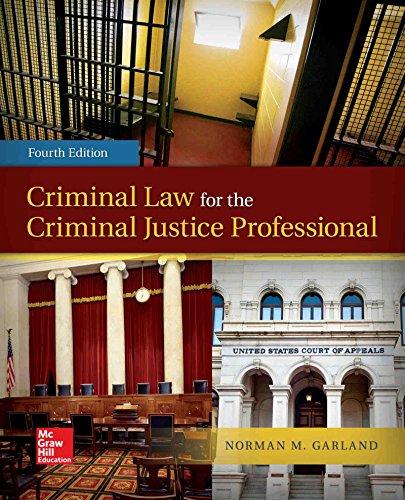
Instant digital products (PDF, ePub, MOBI) ready for you
Download now and discover formats that fit your needs...
Constitutional Law for Criminal Justice 15th Edition, (Ebook PDF)
https://ebookmass.com/product/constitutional-law-for-criminaljustice-15th-edition-ebook-pdf/
ebookmass.com
MindTap Introduction to Law Enforcement and Criminal Justice, 12th Edition (K12 Instant Access) 12th Edition, (Ebook PDF)
https://ebookmass.com/product/mindtap-introduction-to-law-enforcementand-criminal-justice-12th-edition-k12-instant-access-12th-editionebook-pdf/
ebookmass.com
Criminal Justice Ethics: Theory and Practice 4th Edition, (Ebook PDF)
https://ebookmass.com/product/criminal-justice-ethics-theory-andpractice-4th-edition-ebook-pdf/
ebookmass.com
A Practical Guide to Dermal Filler Procedures Har/Psc Edition – Ebook PDF Version
https://ebookmass.com/product/a-practical-guide-to-dermal-fillerprocedures-har-psc-edition-ebook-pdf-version/
ebookmass.com
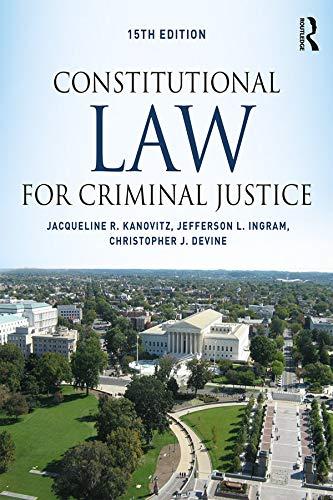
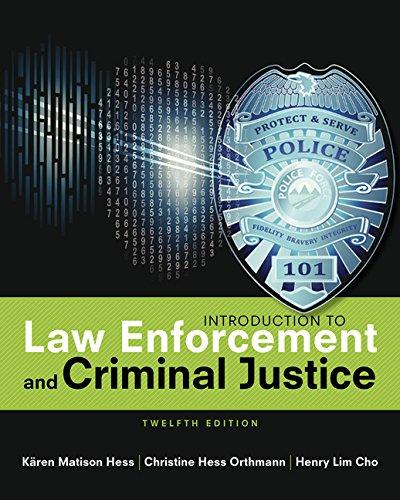


The Disappearance of the Soul and the Turn against Metaphysics: Austrian Philosophy 1874-1918 (The Oxford History of Philosophy) Mark Textor
https://ebookmass.com/product/the-disappearance-of-the-soul-and-theturn-against-metaphysics-austrian-philosophy-1874-1918-the-oxfordhistory-of-philosophy-mark-textor/
ebookmass.com
Outsourcing Repression: Everyday State Power in Contemporary China Lynette H. Ong
https://ebookmass.com/product/outsourcing-repression-everyday-statepower-in-contemporary-china-lynette-h-ong-2/
ebookmass.com
Some Kind of Justice: The ICTY's Impact in Bosnia and Serbia Diane Orentlicher
https://ebookmass.com/product/some-kind-of-justice-the-ictys-impactin-bosnia-and-serbia-diane-orentlicher/
ebookmass.com
Digital Media: Concepts and Applications 4th Edition Tena B. Crews
https://ebookmass.com/product/digital-media-concepts-andapplications-4th-edition-tena-b-crews/
ebookmass.com
Deindustrialization, Distribution, and Development: Structural Change in the Global South Andy Sumner
https://ebookmass.com/product/deindustrialization-distribution-anddevelopment-structural-change-in-the-global-south-andy-sumner/
ebookmass.com
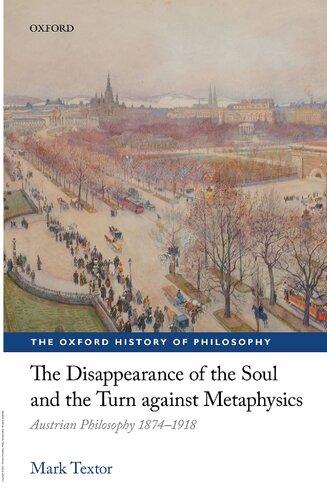

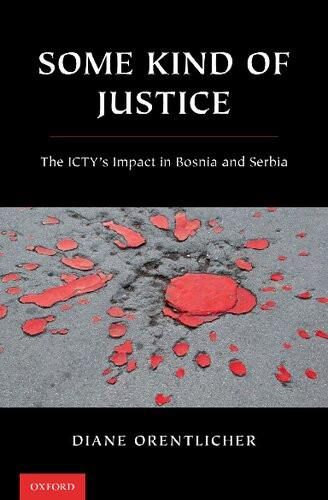
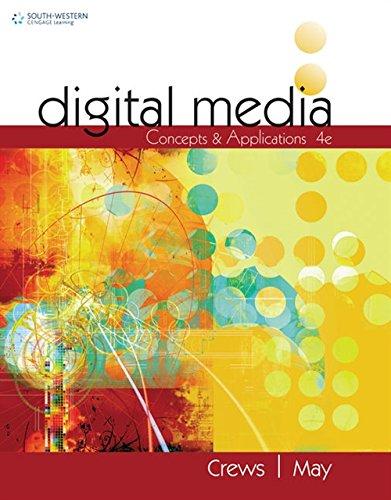

Exam Ref AI-900 Microsoft Azure AI Fundamentals Julian Sharp
https://ebookmass.com/product/exam-ref-ai-900-microsoft-azure-aifundamentals-julian-sharp/
ebookmass.com


Review Questions 28
Problem-Solving Exercises 29
Workplace Applications 31
Ethics Exercises 32
Notes 33
CHAPTER 2 Constitutional Limitations on the Criminal Law 35
2.1 Criminal Law and the U.S. Constitution 36
The Question of Constitutionality 36
The Bill of Rights 37
2.2 Procedural Criminal Law 37
Due Process and Equal Protection 38
Search and Seizure 38
Bills of Attainder and Ex Post Facto Laws 39

Application Case 2.1: Carmell v. Texas 39
Fair Notice and Vagueness 40

Application Case 2.2: People v. Maness 40

Application Case 2.3: City of Chicago v. Morales 42
2.3 Substantive Criminal Law and Individual Due Process Rights 43
First Amendment Rights 44

Application Case 2.4: Hatch v. Superior Court 45
Second Amendment Rights 47
Eighth Amendment Rights 48
The Right of Privacy 50
REVIEW AND APPLICATIONS 51
Summary by Chapter Objectives 51
Key Terms 52
Review Questions 52
Problem-Solving Exercises 52
Workplace Applications 53
Ethics Exercises 54
Notes 54
CHAPTER 3 Classification of Crimes and Basic Elements of Criminal Responsibility 56
3.1 Classification of Crimes 57
Criminal, Civil, and Moral Responsibility 57 Felonies, Misdemeanors, and Petty Offenses 59
3.2 Basic Elements of Criminal Culpability 62
3.3 The Physical Act: Actus Reus 62

Application Case 3.1: People v. Decina 63
Thoughts versus Acts 63
Omissions as Acts 64

Application Case 3.2: Jones v. United States 64

Application Case 3.3: People v. Beardsley 65

Application Case 3.4: Barber v. Superior Court 65
Words as Acts 67
Possession as an Act 67
3.4 The Mental State: Mens Rea 68
Specific Intent and General Intent 68

Application Case 3.5: United States v. Melton 69
Transferred Intent 70

Application Case 3.6: People v. Scott 70
Strict Liability 71
Model Penal Code Classifications of Mental States 71
3.5 Causation and Concurrence 73
Cause-in-Fact and But-For Tests 74
Proximate and Intervening Causes 74
Concurrence of Elements 75
REVIEW AND APPLICATIONS 76
Summary by Chapter Objectives 76
Key Terms 78
Review Questions 78
Problem-Solving Exercises 78
Workplace Applications 79
Ethics Exercises 79
Notes 80
PART II The Elements of Crime
CHAPTER 4 Parties to a Crime 81
4.1 The Role of the Accomplice 82
Common Law Distinctions 82
Modern Parties to a Crime 83
4.2 Actus Reus of Accomplice Liability 85
Affirmative Acts 85
Acts of Omission 86

Application Case 4.1: People v. Stanciel 86
Accountability 87
4.3



Mens Rea of Accomplice Liability 88
Purpose and Knowledge 89
Application Case 4.2: State v. Gladstone 90
Agents Provocateur and Entrapment 90
Application Case 4.3: Wilson v. People 91
Application Case 4.4: United States v. Twigg 92
4.4 Extent of Accomplice Liability 94

Application Case 4.5: People v. Luparello 94
Natural and Foreseeable Consequences 94
Negligent Acts 95

Application Case 4.6: Riley v. State 96
4.5 Relationship between the Principal Actor and the Accomplice 97
Innocent Agent or Instrumentality 97



Application Case 4.7: United States v. Walser 99
Feigning Primary Party 99
Application Case 4.8: Vaden v. State 100
When the Principal Actor Is Acquitted 101
Application Case 4.9: People v. Eberhardt 103
4.6 Issues in Accomplice Liability 104
Limitations of and Defenses to Complicity: Abandonment 104
Accomplice Liability versus Conspiracy: The Pinkerton Doctrine 105

Application Case 4.10: Pinkerton v. United States 106
How Far Should Accomplice Liability Reach? 106
REVIEW AND APPLICATIONS 107
Summary by Chapter Objectives 107
Key Terms 109
Review Questions 109
Problem-Solving Exercises 109
Workplace Applications 110
Ethics Exercises 111
Notes 111
CHAPTER 5 Incomplete Crimes 113
5.1 Attempted Crimes 114
The Six Stages of Committing a Crime 115
Historical Development 115
Mens Rea of Attempt 116
Mens Rea and the MPC 117
Actus Reus of Attempt 118

Application Case 5.1: Regina v. Eagleton 119

Application Case 5.2: People v. Rizzo 120

Application Case 5.3: People v. Vizcarra 120


Application Case 5.4: People v. Orndorff 121
Other Elements and Issues 124
Application Case 5.5: People v. Kraft 124
5.2 Defenses to Attempt 125
Impossibility 125

Application Case 5.6: United States v. Thomas 126

Application Case 5.7: United States v. Berrigan 127

Application Case 5.8: Wilson v. State 128
Abandonment 129

Application Case 5.9: People v. Kimball 130
5.3 Solicitation 132
Mens Rea of Solicitation 133
Actus Reus of Solicitation 133
Defenses to Solicitation 133
5.4 Conspiracy 134
Mens Rea of Conspiracy 135
Actus Reus of Conspiracy 136

Application Case 5.10: United States v. Alvarez 136
Defenses to Conspiracy 138
REVIEW AND APPLICATIONS 139
Summary by Chapter Objectives 139
Key Terms 140
Review Questions 140
Problem-Solving Exercises 140
Workplace Applications 141
Ethics Exercises 142
Notes 143
CHAPTER 6 Defenses to Crimes 144
6.1 Types of Defenses 145
Failures of Proof versus True Defenses 145
Burden of Proof 145
Mitigating versus Complete Defenses 146
Justification versus Excuse as the Basis of a Defense 147
6.2 Defenses Based on Justification 148
Self-Defense 148

Application Case 6.1: People v. Goetz 149






Application Case 6.2: State v. Kelly 152
Defense of Others 153
Application Case 6.3: People v. Young 154
Defense of Property and Habitation 155
Application Case 6.4: People v. Caballos 157
Defenses Related to Crime Prevention and Law Enforcement 158
Application Case 6.5: Tennessee v. Garner 160
Necessity (Choice of Evils) 160
Application Case 6.6: Regina v. Dudley and Stephens 163
Application Case 6.7: United States v. Holmes 163
Consent 164
6.3 Defenses Based on Excuse 165
Age/Infancy 165
Duress 166

Application Case 6.8: People v. Unger 167

Application Case 6.9: State v. Toscano 168
Intoxication 169
Insanity 170

Application Case 6.10: State v. Cameron 173

Application Case 6.11: United States v. John Hinckley, Jr. 174
Diminished Capacity 175
Mistake 176

Application Case 6.12: People v. Evans 176
Entrapment 177
Specialized Defenses 177
REVIEW AND APPLICATIONS 178
Summary by Chapter Objectives 178
Key Terms 178
Review Questions 179
Problem-Solving Exercises 179
Workplace Applications 180
Ethics Exercises 181
Notes 181
CHAPTER 7 Punishment and Sentencing 184
7.1 Punishment in the Criminal Justice System 185
Definition of Punishment 185
Retributive Rationale for Punishment 186
Utilitarian Justification for Punishment 186
Modern Views on Punishment 188
7.2 Sentencing 189
Types of Sentencing 189

Application Case 7.1: Ewing v. California, Lockyer v. Andrade 191

Application Case 7.2: Blakely v. Washington, United States v. Booker 192
Alternatives to Imprisonment 193
Death Penalty 195
REVIEW AND APPLICATIONS 199
Summary by Chapter Objectives 199
Key Terms 200
Review Questions 200
Problem-Solving Exercises 200
Workplace Applications 201
Ethics Exercises 201
Notes 202
PART III Types of Crime
CHAPTER 8
Criminal Homicide 206
8.1 Homicide 207
The Beginning of Life 207

Application Case 8.1: Keeler v. Superior Court 208
The End of Life 210
The Right to Die 211
8.2 Elements of Criminal Homicide 212
Corpus Delicti Requirement 213

Application Case 8.2: People v. Kimes and Kimes 214
Actus Reus 215

Application Case 8.3: People v. Newton 215
Mens Rea 216
Causation 217

Application Case 8.4: Kibbe v. Henderson 219 Without Lawful Justification or Excuse 220
8.3 Types and Degrees of Criminal Homicide 221
8.4 Murder 222
Malice Aforethought 222
The Felony Murder Rule 223



Application Case 8.5: People v. Stamp 224
Reckless Disregard for the Value of Human Life 226
Application Case 8.6: Taylor v. Superior Court 226
The Division of Murder into Degrees 226
Application Case 8.7: People v. Anderson 227


Application Case 8.8: State v. Gounagias, People v. Berry 228
Defenses to Murder 229
Application Case 8.9: Law v. State 230
8.5 Manslaughter 231
Voluntary Manslaughter 231

Application Case 8.10: Montana v. Egelhoff 233
Involuntary Manslaughter 234
REVIEW AND APPLICATIONS 236
Summary by Chapter Objectives 236
Key Terms 237
Review Questions 237
Problem-Solving Exercises 238
Workplace Applications 238
Ethics Exercises 239
Notes 239
CHAPTER 9 Crimes against Persons: Other Offenses 241
9.1 Physical Crimes 242
Battery 242
Assault 243
Mayhem 245

Application Case 9.1: People v. Keenan 246
Robbery 246
9.2 Sex Crimes 249
Rape 249

Application Case 9.2: Rusk v. State 251
Statutory Rape 252
Spousal Rape 253
Child Molestation 254

Application Case 9.3: Buckey v. County of Los Angeles 254
9.3 Crimes against the Person in the Home 256
Criminal Abortion 256

Application Case 9.4: State v. Horne 258
Child Abuse 258

Application Case 9.5: State v. Williams 259
Spousal Abuse 261
Elder Abuse 262
9.4 False Imprisonment and Kidnapping 264
False Imprisonment 264

Application Case 9.6: In the Matter of the Welfare of R.W.C. 265
Kidnapping 266
REVIEW AND APPLICATIONS 268
Summary by Chapter Objectives 268
Key Terms 269
Review Questions 269
Problem-Solving Exercises 270
Workplace Applications 271
Ethics Exercises 271
Notes 272
PART IV Crimes against Property
CHAPTER 10
Crimes against Habitation 275
10.1 Arson 276

Application Case 10.1: Poff v. State 278
Intent Required for Arson 278
Elements and Degrees of Arson 279
10.2 Burglary 281
Elements of Burglary 281

Application Case 10.2: Youthful Burglars 282

Application Case 10.3: State v. Cochran 283

Application Case 10.4: People v. Czerminski 284

Application Case 10.5: K.P.M. v. State 284
Breaking and Entering 286
Degrees of Burglary 287
Possession of Burglar’s Tools 288
Vehicular Burglary 288
REVIEW AND APPLICATIONS 289
Summary by Chapter Objectives 289
Key Terms 290
Review Questions 291
Problem-Solving Exercises 291
Workplace Applications 292
Ethics Exercises 292
Notes 292
CHAPTER 11
Crimes against Property 294
11.1 Forms and Variations of Theft 295
Theft 295


Application Case 11.1: Quarterman v. State 295
Larceny 296
Application Case 11.2: Fussell v. United States 296
Embezzlement 300
False Pretenses 302

Application Case 11.3: People v. Lorenzo 302
Receiving Stolen Property 302
11.2 Extortion, Blackmail, and Bribery 304
Extortion 304
Blackmail 305
Bribery 306
11.3 Forgery and Uttering 306
REVIEW AND APPLICATIONS 308
Summary by Chapter Objectives 308
Key Terms 308
Review Questions 309
Problem-Solving Exercises 309
Workplace Applications 310
Ethics Exercises 310
Notes 310
PART V Crimes against the Community and Institutions
CHAPTER 12 White-Collar Crimes 312
12.1 Understanding White-Collar Crime 313
12.2 Tax Evasion 313
Existence and Proof of a Tax Deficiency 313

Application Case 12.1: Friedberg v. United States 315
Affirmative Act 315

Application Case 12.2: Spies v. United States 315
Willfulness 316
Defenses 316
12.3 False Advertising 317
Federal Law 317

Application Case 12.3: Truck Components, Inc. v. K-H Corp. 318

Application Case 12.4: American Home Products Corporation v. Johnson & Johnson 319
State Laws 319
12.4 Mail Fraud 320
Scheme to Defraud 320

Application Case 12.5: McNally v. United States 321
Intent to Defraud 322
Use of the U.S. Postal Service or Private Interstate Carrier 322
Furtherance of the Scheme to Defraud 322
12.5 Securities Fraud 323
Substantive Fraud 324

Application Case 12.6: Dirks v. SEC 325
Offer, Purchase, or Sale of a Security 326
Use of Interstate Commerce or Mails 326 Defenses 326
12.6 Crimes against the Food and Drug Act 327 Definitions 328 Defenses 329

Application Case 12.7: United States v. Dotterweich, United States v. Park 330
12.7 Antitrust Crimes and Monopoly 331
Key Federal Acts 331
Other Issues 332
REVIEW AND APPLICATIONS 334
Summary by Chapter Objectives 334
Key Terms 336
Review Questions 336
Problem-Solving Exercises 336
Workplace Applications 337
Ethics Exercises 338
Notes 339
CHAPTER 13 Crimes against Public Order, Safety, and Morality 341
13.1 Public Order and Safety Offenses 342 Offenses That Create a Public Disturbance 342

Application Case 13.1: Papachristou v. City of Jacksonville 343
Nuisances 344

Application Case 13.2: Arcara v. Cloud Books, Inc. 345
Traffic Violations 345 Weapons Offenses 349
13.2 Public Morality Offenses 352 Obscenity 352




Application Case 13.3: United States v. Thomas, United States v. Maxwell 354
Application Case 13.4: United States v. United States District Court 355
Indecent Exposure 355
Application Case 13.5: People v. Garrison 356
Prostitution, Solicitation, and Pandering 357
Application Case 13.6: State v. Tookes 358
Adultery, Fornication, and Illicit Cohabitation 360
Sodomy and Related Offenses 360

Application Case 13.7: Lawrence v. Texas 361
Gambling 362
REVIEW AND APPLICATIONS 363
Summary by Chapter Objectives 363
Key Terms 365
Review Questions 365
Problem-Solving Exercises 366
Workplace Applications 367
Notes 367
CHAPTER
14 Drug- and Alcohol-Related Crimes 369
14.1 Types of Psychoactive Drugs 370 Stimulants 370
Depressants 370
Hallucinogens 371
Marijuana 371
Inhalants 371
Designer Drugs 372
Steroids 372
14.2 History of Drug Legislation in the United States 372
Drug Use in Nineteenth-Century America 372 Drug Legislation from the 1800s to the Present 373
Current Drug Use 376
Current Drug Policy 377
Drugs and Religious Freedom 380
14.3 Drug Offenses 381
Possession 381

Application Case 14.1: Wheeler v. United States 382

Application Case 14.2: United States v. Civelli 383

Application Case 14.3: United States v. Jewell 384

Application Case 14.4: Jones v. State 385





Application Case 14.5: State v. Brown 386
Application Case 14.6: State v. Davis 387
Other Drug Offenses 387
Application Case 14.7: United States v. Eastman 388
Application Case 14.8: City of Tacoma v. Luvene 389
Narcotics or Drug Addiction as a Defense 391
Application Case 14.9: Robinson v. California and United States v. Moore 391
14.4 Alcohol Legislation and Offenses 392
Temperance and Prohibition 392
Changing Views on Alcohol Use and Abuse 392
Drunk Driving Offense (Driving under the Influence) 393

Application Case 14.10: Schmerber v. California 395
Intoxication and Alcoholism as Defenses 395

Application Case 14.11: Driver v. Hinnant 396

Application Case 14.12: State ex rel. Harper v. Zegeer 397
REVIEW AND APPLICATIONS 398
Summary by Chapter Objectives 398
Key Terms 399
Review Questions 399
Problem-Solving Exercises 400
Workplace Applications 400
Ethics Exercises 401
Notes 402
CHAPTER 15 Crimes against the Administration of Justice 405
15.1 Obstruction of Justice 406
15.2 Bribery 406
Common Law Bribery 406
Modern Bribery 407

Application Case 15.1: McDonell v. United States 407
Commercial Bribery 409
15.3 Perjury 410

Application Case 15.2: People v. Sharpe 412
15.4 Obstruction of Justice 412
Witness Tampering 413

Application Case 15.3: United States v. Baldyga 414
Suppressing Evidence 415
15.5 Resisting Arrest 415

Application Case 15.4: United States v. John Bad Elk 417
15.6 Compounding and Misprision of a Felony 418
15.7 Escape 419

Application Case 15.5: People v. Trujillo 420
15.8 Contempt of Court 420
REVIEW AND APPLICATIONS 422
Summary by Chapter Objectives 422
Key Terms 423
Review Questions 424
Problem-Solving Exercises 424
Workplace Applications 425
Ethics Exercises 425
Notes 426
CHAPTER 16 Organized Crime, Gangs, and Terrorism 428
16.1 Organized Crime 429
Historical Development 429
Elements of and Participants in Organized Crime 430
Typical Organized Crime Activities 432
Laws That Target Organized Crime 436

Application Case 16.1: United States v. Gotti 436

Application Case 16.2: United States v. Andrews 439
16.2 Street Gangs 442
The Structure of a Modern Street Gang 442
Crimes Committed by Gangs 443
Identifying Gang Organizations 443


Application Case 16.3: Mexican Mafia Crackdown 444
Laws That Target Gangs 447
Application Case 16.4: City of Chicago v. Morales 448
16.3 Terrorism 451
Terrorism Distinguished from Other Crimes 451

Application Case 16.5: United States v. McVeigh 453
Laws That Target Terrorism 454
The Criminal Justice System as a Counterterrorism Tool 455
REVIEW AND APPLICATIONS 457
Summary by Chapter Objectives 457
Key Terms 459
Review Questions 459
Problem-Solving Exercises 459
Workplace Applications 460
Ethics Exercises 461
Notes 461
Glossary 466
Case Index 477
Subject Index 479









